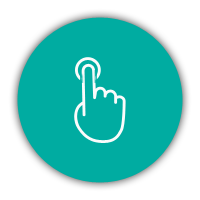What does organic really mean?
 The term “organic” refers to the way agricultural products are grown and processed. Before a product can be labeled “organic,” a government certifier inspects the farm where the food is grown to make sure the farmer is following all the rules necessary to meet USDA organic standards. Produce can be labeled organic if it’s certified as having been grown in soil that had no prohibited substances applied for three years prior to harvest. These prohibited substances include pesticides, synthetic fertilizers, sewage sludge, genetically modified organisms, or ionizing radiation. Animal products labeled organic such as meat, poultry, eggs, and dairy products do not take antibiotics or growth hormones.
The term “organic” refers to the way agricultural products are grown and processed. Before a product can be labeled “organic,” a government certifier inspects the farm where the food is grown to make sure the farmer is following all the rules necessary to meet USDA organic standards. Produce can be labeled organic if it’s certified as having been grown in soil that had no prohibited substances applied for three years prior to harvest. These prohibited substances include pesticides, synthetic fertilizers, sewage sludge, genetically modified organisms, or ionizing radiation. Animal products labeled organic such as meat, poultry, eggs, and dairy products do not take antibiotics or growth hormones.
Have you ever heard of the “Dirty Dozen” or “Clean 15”?
The foods found on these two lists give you a guide on what produce has the highest pesticides (dirty dozen) vs. the lowest pesticides (clean 15). Organic foods tend to be pricier so following this list can give you a better idea of what produce you should buy organic and what is okay to purchase non-organic.
Dirty Dozen
-Peaches
-Apples
-Sweet Peppers
-Celery
-Nectarines
-Strawberries
-Grapes
-Spinach
-Potatoes
-Cucumbers
-Cherry Tomatoes
-Kale/Collard Greens
Clean 15
-Onions
-Avocado
-Sweet corn
-Pineapples-Mango
-Asparagus
-Cantaloupe
-Sweet Peas (frozen)
-Kiwi
-Bananas
-Cabbage
-Papaya
-Eggplant
-Sweet Potatoes
-Grapefruit
Stay tuned next week as we discuss the benefits of buying organic foods and tips to keep the cost of organic foods within your budget!





